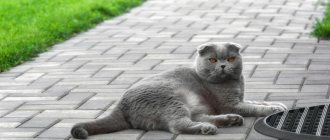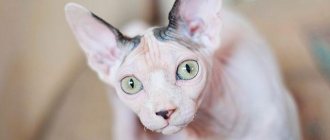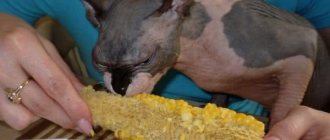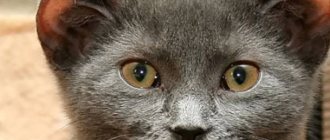Sphinxes of ancient Egypt and Amenhotep III
It was in ancient Egypt that the mythical creatures Sphinxes first appeared. Beyond the Nile Valley there were lions, they were stately. Stone craftsmen carved them out of granite. Bronze sculptures were also created. The statues are made in the image of lions, and they were installed at Shrines and tombs for the purpose of protection from evil forces. Later, the lion's head was replaced with the head of an Egyptian ruler, after which it became generally accepted that the granite monument possessed the lion's power and human intelligence, because the Egyptians always considered Amenhotep (and the son of Amon) and each pharaoh to be the messenger of Amon Ra.
Pharaoh Amenhotep III was born in ancient Egypt - the capital of Thebes (source of information - book by V. Struve). It was installed 700 kilometers south of the Mediterranean. He began to rule very early - he ascended the throne at the age of nine. He was the ruler of Thebes and all of Egypt from 1388 to 1351 until our century. During his reign, he managed to launch monumental construction. Under his leadership, many magnificent temples and monuments were erected. Also, during the years of fruitful reign, commerce and art were developed. On the alley that leads to the palace of this pharaoh, there were sphinxes guarding against evil forces.
Curse of the Egyptian Pharaohs
According to a widespread legend, anyone who disturbs the peace of the pharaoh and makes the sphinx guards “nervous” will be cursed, so everyone who was somehow involved in the “moving” of the Egyptian statues suffered punishment. It is believed that while the sphinx is in a foreign land, the curse intensifies. And it can only be removed by returning the statues to their homeland. After the death of Nicholas I, rumors started talking about his suicide - supposedly the tsar could not bear the defeat in the battle near Yevpatoria (Crimean War) and deliberately died. According to the official version - due to participation in military reviews in a light uniform, despite pneumonia. Unofficially, due to taking poison. The reputation of a suicide cast a dark shadow over the figure of the righteous and extremely religious sovereign. The curse spread to the entire Romanov family: from the murder of Alexander II by the Narodnaya Volya to the execution of the entire family of Nicholas II by the Bolsheviks. Archaeologist Janis Atonazis, who dug up the “hidden” sphinxes, died under mysterious circumstances. One after another, all the close relatives of officer Muravyov, who looked after the statues, petitioned the emperor for their purchase and supervised delivery. Within 2 years after transporting the sphinxes to Russia, all members of the crew and the captain of the ship died. They also tend to attribute the tragic events of the dispersal of students near the University Embankment in 1899 to the effect of the curse, when unarmed students of St. Petersburg University and random passers-by were forced to disperse by mounted gendarmes with whips. It is interesting that the officer of the Pyramids led the bloody massacre.
How did sphinxes get to Russia?
If we talk about the most famous granite sphinxes, then without a doubt we can say that these are sculptures created around the 14th century BC. They installed them on the University Embankment (they are the ones that have the most important historical value), and found them during archaeological excavations. But more on this... During the French Revolution (in 1830), the new government had no time for architectural monuments, so they decided to sell the sphinxes. A buyer was quickly found - Russia, which bought the Egyptian mythical creatures for 64,000 rubles. The Sphinxes were loaded onto a chartered Italian ship and sent to the Northern Capital. Their last refuge is the St. Petersburg pier (installed in 1832). The design of the pier as unique figured columns in those years caused a stir; all residents and guests of the city of Petra became very interested in the architecture of Egypt. Although prior to this, interest had been lost since Napoleon's last invasion of Egypt.
The composition of the stone descent to the Neva is complemented by granite benches and bronze lamps in an antique style. Bronze lamps and four griffins were cast by metal craftsmen using wooden models. Cast by master P.P.Gede in 1834. He cast the sphinxes from the strongest pink granite stone. The Egyptians also cast bronze sculptures.
Initially, the stone block of the Sphinx was hewn and the sculptor made it rectangular. The block was then transported by water to the required location and installed. They first drew cells on top of the granite, then they drew parts of the face of the mythical creature, its rear view, and only then the slaves worked on chipping the stone. After the sculpture was carved and completely completed, it was polished.
There are various beliefs about these discovered sphinxes. They say that throughout the day the expression on their faces changes. In the morning, the faces seem idyllic; they remain so calm only until lunchtime, because closer to dusk the faces of the statues change and take on an evil and frightening appearance. Often, townspeople go to these monuments for specific purposes before sunset in order to catch the moment when the face of the idols begins to change. But it is better to avoid such spectacle, especially if we are talking about impressionable people who, at the sight of the changing face of the statue, may lose their minds or die from a heart attack. Of course, such cases have not been officially registered, but impressionable people try not to go to the idols in the evening during sunset.
PRELIMINARY STANDARD.
General characteristics. Hot to the touch, gentle but strong and elegant cats with a long body, long limbs and a long tail, but strong bones. The head is narrow, wedge-shaped, with flat cheeks and forehead, the muzzle is strong, not sharp, a slight pinch is acceptable. There are vertical folds on the forehead, diverging horizontally above the eyes. The chin is in line with the tip of the nose. Straight profile line. The ears are large, not wide at the base, slightly set apart. The eyes are almond-shaped, slanted, green or blue. The body is long, dense, muscular. Deep groin line. The limbs are long, thin, but with strong bones. Forearms are straight. Paws are oval. The fingers are long and mobile. The tail is long, straight, biting. There may be residual hair on the last third of the tail. The skin is thin, redundant, in moving folds. There may be residual hair on the muffs at the base of the ears, on the muzzle, paws and lower parts of the limbs, and tail. In cold weather, the fur on the body is somewhat more noticeable. The vibrissae are convoluted and may be broken off or absent in adult animals. No eyelashes. colors .
Kittens are born with Rex wavy hair and a “bald spot” on their forehead. The whiskers are always curled - the main sign of belonging to the breed at birth. Eyes open early (3-5 days).
Flaws. Short, round head, small or low-set ears, round eyes, short body, short or incorrectly ending tail, full body hair, weak chin, underbite up to 2 mm.
Vices. Entropion of the eyelids, underbite of more than 2 mm, hooks and kinks in the tail. Crossing with oriental cats is allowed only to consolidate the oriental type.
Contents of the sphinxes. Despite the lack of hair, the Sphynx cannot be considered completely hairless.
Its skin is covered with a very short and thin undercoat, almost invisible to the eye and imperceptible to the hands. It feels like soft, delicate suede to the touch. Tiny soft hairs are found on the ears, face, paws and tail. The lack of insulating fur means your cat feels warm when you touch her. Mustaches and eyebrows may be present in full or incompletely, or they may not be present at all. “Wool” can have any color or pattern, including colorpoint. Because of the invisible hairs, the pattern and color of the fur appear to be imprinted directly on the skin. These cats have a high body temperature, so they feel hot to the touch. In this regard, they are endowed with medicinal properties. In addition, there is an opinion that hairless cats, unlike “wool” ones, do not cause allergies. This opinion is erroneous, since allergens are contained in the secretions of the animal’s skin and saliva, regardless of whether it is “dressed” or “undressed”. These animals, despite their short breeding, are very calm, affectionate, devoid of aggression, they are unusually gentle with people and get along well with other animals. Very active, sociable and inquisitive. Their games are entertaining, they are like children who need to be raised, communicated and looked after. They have an amazing and incomprehensible effect on everyone who takes them in their hands for the first time, as if bewitching a person. Sphynx owners claim that this is the most intelligent and loving cat of all breeds. But you shouldn’t think that everything is so simple and easy and that they don’t require any care or attention. Keeping them is not that difficult, although there are still some differences from keeping other cats. Firstly, it is wool, that is, its absence. Sphynxes can freeze and get sick, so you need to seriously monitor this and avoid drafts and dampness. But sphinxes can also burn their delicate bodies near a hot radiator or fireplace. Because these cats sweat (a very unusual trait for cats), they should be wiped daily with a damp sponge to remove oils or bathed regularly with warm water and a mild shampoo. By the way, they treat this procedure very calmly. To maintain heat exchange (due to the lack of fur in sphinxes it is increased) a lot of energy is required. Therefore, they always have a good appetite and need to be fed a lot. The Sphynx diet should include meat, fish, eggs, oatmeal, cottage cheese or good quality ready-made food. However, there is no big difference here from feeding other cats. The better the food for your pet, the healthier it will look. On cold days, it is necessary to increase the calorie content of the diet so that cats do not freeze. There are also no special problems with childbirth. They bear kittens well and give birth easily. Cats tolerate pregnancy well and cope with childbirth themselves. Maternal instincts are perfectly expressed, which is especially valuable. Cats help each other during childbirth and feeding their offspring. Cats lick and warm kittens, participate in their games and education.
What does the ancient Egyptian sphinx look like?
On the neck of the mythical creatures there was a six-row decoration in the form of a necklace made of beads. In Egypt, such jewelry was only allowed to be worn by pharaohs and nobles. The artist's pair of front paws are partially covered with striped textile. On the chest, in the very center, is an oblong talisman. It contains the name of the Egyptian ruler and the title of the ruler. Basically, Egyptian decoration was always placed on the foreheads of the statues of the pharaohs in the image of a curving cobra; in Egypt it was considered a sacred animal. But the sphinxes in St. Petersburg have had their snake heads knocked off. The inscriptions made on the chest of the sculptures prove that the heads of the idols had similarities with the features of the Egyptian ruler Amenhotep III.
Kittens
Sphynx births are easy. Cats are caring mothers, and, remarkably, cats also participate in raising their offspring. They watch the cubs, lick them, and play. Kittens usually move to a new home at the age of three months.
The St. Petersburg Sphynx is a relatively new breed, but it is rapidly gaining popularity and receiving recognition from felinological organizations. The purpose of breeding is not only to create attractive external qualities, but also to preserve the wonderful intelligence and character of the Peterbald.
Sphinxes that were installed on the Robespierre embankment
Robespierre's pier is one of the places where statues of the mythical creature, made in modern times, stand. In April 1995, a memorial site was opened on this pier in memory of the bloody repressions. The sphinxes, created by the famous Russian master Mikhail Shemyakin, which recline on granite elevations, have two different profiles. One female profile, and he “looks” towards the marina houses. The other, in the form of a skull, “looks” towards the famous St. Petersburg Neva and stands on the opposite side of the river bank, towards the St. Petersburg prison “Crosses”, famous throughout Russia. There is currently no information about these particular sphinxes. The only legend says that they help imprisoned people who find themselves behind bars to return home as soon as possible and get on the right path. In general, all the sphinxes that are located in the city on the Neva are considered helpers. In each place they have their own mission.
Diseases and health
Peterbalds can safely be called a young breed; they are not plagued by any hereditary diseases. In addition to strong intelligence, good health is noted. Problems will not arise when carrying out standard activities in the form of:
- deworming;
- timely vaccination;
- regular and proper care;
- bathing;
- examinations by a veterinarian.
As for the average life expectancy, it reaches 15 years with good maintenance. But owners of St. Petersburg Sphynxes should understand that they can carry diseases characteristic of hairless cats. First of all, these are various colds, so optimal living conditions must be created for such pets. The presence of drafts, overheating, and hypothermia is unacceptable.
Warmth is vital for Peterbalds; in winter they should be dressed and warmed in every possible way. You will have to endure it when a persistent pet tries to settle down under a blanket, where it can warm up and protect itself from hypothermia. Often, cunning cats take advantage of their position and strive to take leadership over their owner.
One of the unpleasant diseases of St. Petersburg cats is allergic rashes. If they appear, they will most likely worsen periodically throughout life. Treatment and prevention are carried out using regular acne lotions. Intense rashes are observed during the period of hormonal surge in cats, which, in the absence of therapeutic measures, can transform into purulent pimples. Castration will help solve this problem once and for all.
The most dangerous pathology of Peterbalds is congenital underdevelopment of the thymus. This is the organ responsible for the overall development of the body and the normal functioning of the immune system. If such a defect occurs, the animal dies at a fairly young age.
Shi-tsa, Petrovskaya pier
Shi-tzu are two mythical guards that are installed at the launch along the Neva, namely on Petrovskaya embankment. And they were installed in 1907. The images of mythological creatures are similar to sphinxes, lions or Pekingese - you can’t really tell. Shih Tzu was brought as a gift to St. Petersburg by a noble man named Grodekov. He was the Amur governor-general, who was given sculptors by the Chinese. These statues differ from other paired works of sculptors; they are of different genders: the left Shi-tzu has several cubs under his paw, the right one (male) has round-shaped pearls, which are a symbol of divine radiance. The sight of sphinxes originally from the Celestial Empire makes you touch and admire the monuments.
Coat Types
Peterbald cats can have different coats.
There are nine types of coat of the St. Petersburg Sphynx:
- Bald - these kittens are born hairless. They are completely hairless at birth;
- Hairless cat - becomes hairless after 2 years of age;
- Flock is a cat whose fur is rare and soft. The length of the hairs does not exceed 2 mm. Such cats do not have mustaches or eyebrows;
- Velor - the wool is located more densely than that of flock;
- Brush - hairs can have different degrees of density. A cat's skin brush may have soft or hard hair;
- Brush point is a type where hair is present only on certain parts of the animal’s body: tail, paws and head;
- A straight-haired cat is a cat that has straight hair;
- Dust - characterized by wool so fine that it resembles dust;
- Rubber. The skin of this type of Sphynx can be pulled like rubber, but it feels very pleasant.
As for the color of Peterbalds, it can be very diverse.
Sphinx women
There are many sphinxes in St. Petersburg, some in female form, for example, reclining in the waters of the courtyard of the Mining Institute, in the depths of the ancient garden. The figured columns are small and stand without elevations for monuments, but the statues are black in color, so they stand out against the green background of plants. They have been standing here since 1826 thanks to the sculptor Alexander Postnikov. There is an opinion that these beautiful bronze sculptures help students pass exams. The main thing is to come to the statues and ask them about it before taking the exams.
Peterbald character
The character of the Peterbald is another advantage of the breed. Representatives of the breed are very friendly, peaceful and sociable.
Unlike many other breeds, Sphynx dogs are not loners; they love to spend time with their owner and other family members, but the owner is their favorite.
The Peterbald loves attention, so if you want a less annoying pet, then you should not choose the Petersburg Sphynx.
These cats get along well with other pets, and not just cats. These could be dogs, birds. Peterbalds are also great with small children. In addition, animals are very playful, and a candy wrapper can keep them entertained for several hours.
Due to their nature, these pets are able to learn many commands, and also easily get used to the tray, scratching post and sleeping place.
Restoration
For a long time, the Egyptian sphinxes did not require restoration work, but nothing lasts forever. During the Great Patriotic War, the embankment was seriously damaged, along with the sphinxes. But in the post-war years it was restored. In 20002, for the first and so far only time in its entire existence, it was restored. The work was carried out by employees of the Academy of Ecology and Restoration of Historical and Cultural Objects of St. Petersburg. At the time of the restoration of the Scythians, the Academy was under the leadership of S. B. Shchigorets and A. A. Doos.
Care and maintenance
Caring for St. Petersburg Sphynxes is not difficult. But there are some nuances to feeding and caring for the naked skin of the Peterbald.
Nutrition
The Peterbald has a high metabolism, so the pet needs a high-calorie and balanced diet, but without overfeeding.
You can feed your Peterbald both store-bought super-premium food and natural products. In the second case, it is necessary to properly balance the diet. The Sphynx is fed meat, fish, cereal porridges, dairy products, and fresh vegetables. In the warm season, meat food should make up 60% of the diet, in the cold season - 80%.
You cannot treat your Peterbald to fatty and fried foods, smoked meats, pickles, sweets, and scraps from the master's table.
Bathing
Peterbalds are taught to bathe from an early age, so this procedure will not be stressful. For bathing, use zoo shampoo. The water temperature should be 38–40 °C. The bathed cat is wrapped in a thick towel.
Recommendation! Instead of bathing, you can wipe the Sphynx's skin with wet, alcohol-free wipes. And to moisturize the Peterbald's skin, use unscented baby oil.
Caring for ears, eyes and claws
Since the Peterbald does not have eyelashes, the teardrops of the eyes must be regularly cleaned of secretions with a lint-free cloth moistened with boiled water. The ears of the sphinx are cleaned in a similar way.
The claws are shortened with a nail clipper. For your Peterbald, you should purchase a scratching post and train him to use it so that the pet does not damage the furniture.
Walk
The St. Petersburg Sphynx is susceptible to colds, so it is not advisable to walk it. If you still want to take your pet for a walk, then put on warm cat clothes.
Drownings and floods
Another St. Petersburg legend says that Egyptian sphinxes indicate the place of drowned people. Indeed, bodies are often discovered next to them, but scientists explain this fact by the hydrological features of the Neva currents. It is believed that the sphinxes on the University Embankment protect the city from floods. Before 1832, the level of the Neva rose strongly on average once every 10 years, but after the appearance of the Egyptian guards in 1834, the first major flood occurred only 39 years later (in 1863), and then another 31 years later. Well, the next catastrophe occurred after the city was renamed Petrograd. The flood of September 23, 1924 was accompanied by an omen - a rare phenomenon of the northern lights, which was partly attributed to the magical influence of either the sphinxes themselves, or the magic of their pharaoh. The authorities perceived the rampant nature as another challenge to the revolution, and people talked about punishment for renaming the city. Among the officially dead were 16 people, 15 thousand families lost their homes, two million “squares” of St. Petersburg pavements were littered with rubble and destroyed, of the 47 destroyed bridges, 19 were demolished by the flood. While proletarian newspapers were full of calls to unite against the “blind enemy,” people begged for mercy from both the heavenly patron Saint Peter and the faithful sphinx protectors. Later, a stereotype arose that the statues made the Neva more favorable to the inhabitants (the Neva was compared to the Nile, which favored and fed the ancient Egyptians).
Popular city kennels for stray dogs
Stray dogs end up on the street for various reasons - this is a huge problem in all cities, the solution to which is a kennel. Although it is customary to call such establishments an animal shelter. There are different types of dogs here, from mongrels to purebred dogs. And if for nurseries of a narrow specialization the main thing is to breed a specific breed, then for this kind of nursery the main thing is to find an owner for the dog.
Anyone who has reached the age of majority can choose a dog. They try to give all pets into good hands, allowing you to come and see the entire range of animals in the nursery. To be able to give your dog back to you, you need to have a passport, shoe covers and a collar with you. We bring to your attention three of the most famous nurseries in the city of St. Petersburg for stray dogs.
"Friend"
Address: Poselkovaya st., 1, Rzhevka territory, St. Petersburg, industrial zone
☎
Website: priyut-drug.ru
Dogs in enclosures
All dogs are vaccinated and they try to provide proper care with the help of well-wishers who bring food, things or make donations. The shelter has mixed breeds, mixed breeds of shepherds, and mixed breeds of huskies.
Mixed breeds are not considered a breed, but are not considered the same as yard dogs.
General information about the shelter:
| Registration date: | April 26, 2008 |
| Admission of animals: | until 15:00 |
| Number of dogs in the shelter: | about 200 pcs. |
Advantages:
- They give away their favorite pet for free;
- Help to establish contact between the client and the dog;
- Get vaccinated;
- Any age of the pet;
- Dog size: small and large;
- There are puppies - representatives of the golden mean: not mongrels, but not purebred either;
- Location;
- Only healthy pets are given away;
- Dogs accepted daily from owners or strays;
- You can pick up your dog every day.
Flaws:
- Not identified.
"Island of Hope"
☎: +7-921-923-25-82
Opening hours: 11:00-21:00, weekdays
Website: priut-ostrovok.ru
Corridor in the nursery
The shelter gives away animals on its own terms. For example, married couples with children will not be able to adopt a puppy. All criteria for not receiving a dog are indicated on the website. Dogs will only be given to those that have received proper care and vaccinations. Most dogs have their own story, which the management attaches to the photo on the official website, thus increasing the pet’s chance of ending up in a good family.
General information about the shelter:
| Type: | private organization |
| Owner's age: | from 23 years old |
| Price: | for free |
Advantages:
- Dogs are vaccinated;
- Office with a probationary period;
- Calls are accepted 24 hours a day or via email;
- Recommendations for care are given;
- Responsible work with each client;
- Control over the dog is carried out even after finding a family for it;
- Various dogs from yard dogs to purebreds;
- There are cats at the shelter;
- You can view all dogs.
Flaws:
- Not everyone can adopt a puppy or an adult pet;
- No pets accepted (no room available).
"Lost"
☎: 338-80-08, 988-99-55, 988-29-55, around the clock
Opening hours: from 10:00-18:00, on weekends until 17:00
Website: poteryashka.spb.ru
Dog booth
The nursery specializes in helping animals that are in difficult life situations. They work every day, seven days a week, helping owners find lost animals or place them in new families if the old owners don’t show up. Every day, employees advise people who want to take a dog home, organize promotions and holidays.
General information about the shelter:
| Years of existence of the nursery: | more than 20 |
| Animals found and returned: | more than 120 thousand |
| Hosts are expecting: | 340 dogs |
Advantages:
- Various breeds of dogs;
- Helping owners reunite with their pet;
- 24/7 call reception;
- Holding holidays;
- There are promotions;
- Provide everyone with proper care and medical examination.
Flaws:
- Not identified.
Mysterious disappearance
The Sverdlovsk embankment is decorated with two more pairs of sphinxes. They are Soviet replicas and copy those that were made by order of Prince Alexander Bezborodko in the 18th century. The Chancellor ordered them for his own dacha to decorate the pier embankment, then called Polyustrovskaya. It, like the chancellor’s dacha itself, was built according to the design of the architect Giacomo Quarenghi. But in the second half of the 19th century, the statues mysteriously disappeared, and all attempts to find them were in vain. The missing sphinxes and the nearby spring were rumored to have healing properties. One had only to put his hand on the body of the half-man, half-lion or dip his hand in the cool water of the spring, and any ailments disappeared. The superstition has survived to this day, although the role of healers is now performed by copies of healing statues.











